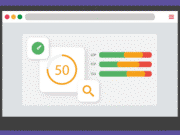Do you want to boost the number of visitors to your website? Do you want to encourage visitors throughout their shopping journey to conversion? When it comes to marketing, what works – and, more crucially, what doesn’t – changes all the time.
There’s a lot of discussion about attracting new customers, but retaining existing ones is just as crucial. One-time users don’t contribute much to the website’s growth since they don’t decide to commit.
Businesses that achieve impressive results in interacting with their customers, using the most up-to-date methods for sending push notifications and other forms of messaging, tend to have a better customer retention rate and lower customer acquisition expenses.
Push alerts are a valuable tool for any smart retention plan. Since they’ve been shown to enhance retention rates, implementing such features becomes essential. That’s a foolproof recipe for the continuous development of any business. Thus, push notification is an excellent approach to connecting your consumers directly and efficiently.
But what exactly can help you improve your strategy? Let’s look at six ways to get the most out of push notifications.
1. Learn the basics

In a nutshell, push notifications let users know about a new message. They help users stay informed, encourage participation in your community, and appreciate loyal customers. It’s possible to remind consumers of all the great features your business provides by sending them various push notifications at different points in the customer lifecycle.
There are three main types of such announcements:
- Content. It’s about sending notifications and reminders to inform your audience of new videos, releases, and events. These are great ways to get people excited about upcoming content by bringing it to their attention.
- Promotions. Users may get information about sales, specials, and other offers on goods and services via promotional announcements. They might be prompted to download your app and purchase using push notifications.
- Involvement. Keep your audience engaged by constantly releasing fresh material in community postings, message board updates, group challenges, and user-generated content. Reminding people, they’re part of a community by sending them an invitation to join is a great way to do it.
If the user expects it, it’ll be preceded positively. If it’s entirely irrelevant, then it may be pretty annoying. The actual issue is how you use those alerts and how often you employ them.
It’s certainly possible to engage your consumers by following these three rules:
- It’s relevant. The user’s activity, location, or desire triggers the notice. If you can construct location-based push alerts in a manner that appeals to your audience, they can be real-time gold mines.
- It’s personal. The content speaks to the user as an individual.
- It’s actionable. The alert instructs the user on what to do next.
As you can see, push alerts are a powerful and necessary tool for retaining a website’s consumers. If you learn more about the basic practices, you can use them to improve your push notification marketing game.
Recommended for you: Holiday Email Marketing: How to Win Maximum Customers During the Peak Season? (Infographic).
2. Ask for permission

One of the essential steps in developing a successful push notification strategy is to request app permission to deliver notification messages. Despite how well you crafted your notifications, they’ll be useless if consumers haven’t agreed to receive them. It’s best to get to know a person before making a default permission request for authorization. Your product’s users must have faith in you and confidence that you won’t abuse their trust.
A user may decide to discontinue push notifications. Therefore, asking for permission at just the right time is essential. The answer to this question will change depending on the specific industry in which the app is being used. In the case of e-commerce applications, for instance, an authorization may be sought after a successful purchase. You may use this to demonstrate the worth of push notifications.
However, this might also backfire. According to Android’s existing permission method, users authorize many rights all at once, which may conflict with the push notification permission grant since users may not wish to opt for it.
Regarding iOS, the problem might get much more complicated since applications are obligated to communicate the importance of such notifications to their consumers. App developers should only tell their users about relevant upgrades to make the method more successful.
3. Understand your user

You can reach the most relevant people with the best content with personalized push alerts at opportune moments. Creative, frequency, delivery timings, location, and content type may all be customized in push notifications. It necessitates dividing your target audience into subsets of potential customers.
In addition, to include the CTA and other essential information, you should mention the user’s name wherever possible. If you’re informing a user on their approaching delivery, for instance, you may provide the specific order number and time of their order as well as the flight number and time of the delay.
Customizing push alerts to different stages in the user journey is also essential. It involves figuring out when consumers will need a push notification to carry out a specific task. Personalizing notifications and effectively engaging consumers at the correct stages in their user lifecycle is vital if you want to maintain user engagement for longer and increase LTV.
If you, as an app company owner, don’t understand why you’re delivering push alerts to your users in the first place, there’s a high chance that your campaign may fail.
If you want to understand your customer and succeed, stick to the following essential tips:
- Communicate your value.
- Identify what’s important to users and target them with it, such as discounts or feature upgrades.
- Determine where and when users interact with your app and target them accordingly.
Thus, you should understand your users’ requirements and expectations by examining their behavioral patterns by monitoring their journey while using your app. Thus, you’ll understand your customer’s desires and the various causes for their abandonment.
You may like: What Techniques and Tools Help You to Improve Your Marketing and Sales Leadership?
4. Ensure relevant user segmentation and message content

Depending on the nature of your company model, sector, or industry, you must employ market segmentation by categorizing your consumers into groups with the characteristics you’re mainly searching for.
It’s pretty unlikely that all of your app’s users want to view the same notification text, picture, or URL. If you don’t segment your users correctly, you’ll deliver irrelevant and needless messages to those who don’t need them. Likewise, it’s valid for your message’s content. So ensure your text is accurate, relevant, and valuable to your user with the right call-to-action or information.
5. Timing is everything

Don’t attack your users right away. It may look desperate and annoy the customers. Giving visitors time to arrive at your website before asking permission to deliver alerts is critical. These few seconds enable them to browse the website and form an opinion about your website and its offerings before deciding to act or get associated with it.
Moreover, a lot depends on the specifics of your sector and your target demographic when determining the optimal time of day to deliver push notifications for your brand. For example, if your app is focused on news, it’s better to set morning alerts. If it’s about education, it’s better to plan them in the afternoon.
Take into account these considerations as you experiment with different schedules and see what works best for your company. As with any new endeavor, you may need to experiment to find what works best for you, but you’ll get the hang of it in no time.
6. Frequency

The typical smartphone user is bombarded with 46 alerts each day. If you want yours to stand out, you should use them cautiously. Sending notifications too often can bore users and detract from the experience, so only use them for critical news. They’ll be much more exciting for users when they appear, leading to more interaction with your service.
While professionals may disagree on the optimal frequency of alerts, they may all agree on the following two guidelines for maintaining satisfied users:
- Limit yourself to at most 1 or 2 alerts daily (unless there’s an urgent matter they need to know about right now).
- Only send up to 10 alerts each week. Ideally, you’d contact your customer daily, if not more frequently.
Once you grasp your weekly routine, you’ll be better able to fine-tune the time.
You may also like: How to Get More Traffic from Content Marketing?
Conclusion

Quick and straightforward interaction with your audience is possible through notifications. Moreover, they help you to transform one-time visitors into valuable, long-term partnerships. However, it takes time and effort. Therefore, you should constantly take extra measures to guarantee that your audience will use your app fully. And a well-executed alert approach is often all that’s required.
All in all, you must keep ahead by educating yourself on all the modern-day strategies for mastering push alerts. To succeed, be clear about what you require from your campaign. Furthermore, making your message relevant and sending it at the right time is also critical.
Much of this boils down to the following idea: be polite and use pleasant language. Moreover, using the personal data at your disposal. Finally, in terms of content, employing custom content and correcting the time and frequency will be highly beneficial for your business.





